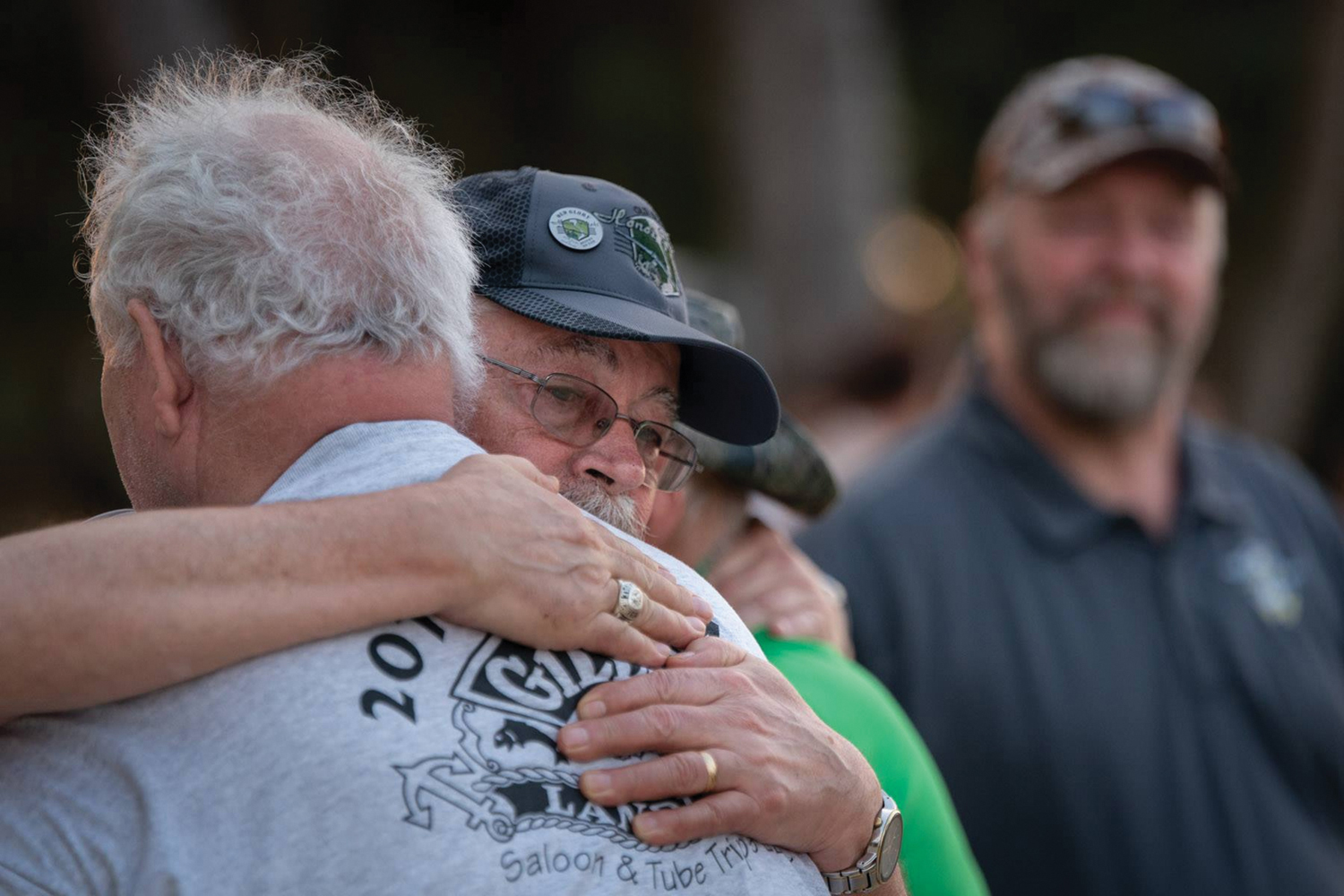Partner Snapshot
The Arizona Chapter of the American Foundation for Suicide Prevention (AFSP) is a driving force for suicide prevention, education, and support within Arizona. With a mission to save lives and bring hope to those affected by suicide, the chapter provides outreach opportunities, survivor support resources, educational prorams for schools and workplaces, and events like community walks and the annual golf fundraiser.
Gina Gillis, the special events manager for Arizona and New Mexico, has a deeply personal connection to the cause. Gina’s journey with AFSP began as a volunteer after the tragic loss of her son to suicide, serving as the chair for a community walk and board member before transitioning to her current staff role.
“Our work helps people understand that they’re not alone. We connect people and families who are struggling with resources to help them cope.”
The Challenge
The annual golf tournament was spearheaded by Dave Canham, who was mourning the loss of his son, Sean, to suicide. Together with Sean’s brother, Evan, who played golf competitively and had fond memories of hitting balls on the range with Sean, they launched a one-of-a-kind golf event: the Golf for Hope glow-in-the-dark golf tournament.
Held at night to escape Arizona’s intense heat and provide a unique, engaging experience, Golf for Hope’s glow-in-the-dark format required thoughtful planning. Glow-in-the-dark golf balls, illuminated pin flags, and glowing signage were implemented to create a magical atmosphere while ensuring playability and safety.
Golf for Hope raised about $3,000 and attracted 25 golfers in its inaugural year in 2019. As the tournament grew, so did the logistical challenges and the need for better processes and tech tools than the chapter’s CRM could provide. Manual registration—through the CRM and emailed information—not only increased the organizers’ workload but left room for errors and inefficiencies.
The tournament includes a cart decorating contest, with glow-in-the-dark elements and lights.
The Solution
In 2023, Dave teamed up with Gina at the chapter office to explore better ways of planning and executing a successful Golf for Hope. Gina had learned about GolfStatus from a colleague, so she and Dave got a product demo and liked what the platform offered to streamline planning and enhance the participant experience. “We wanted a solution that was simple to use and didn’t come with a big price tag,” Gina says. As a nonprofit, AFSP Arizona qualified to use GolfStatus at no upfront cost, which was a major selling point for the planning team.
After the AFSP national office vetted the software, including reviews from IT, finance, and events management, GolfStatus became an integral tool for the chapter, simplifying event logistics and enabling the team to focus on delivering a great event. “We were so excited when we got the ok because we could see how it would make everything easier,” Gina says.
The tournament’s website made it simple for organizers to collect golfer information and sponsor assets.
Key Solutions:
Ease of Use: Gina isn’t a golfer, but was able to easily navigate throughout the intuitive platform’s back end.
Support & Expert Advice: Glow for Hope worked hand-in-hand with GolfStatus’ in-house client success team to build their tournament. The continuity of working with the same rep, while also being able to access front-line support seven days a week, provided peace of mind for the planning team.
Custom Event Website: The GolfStatus platform provided a professional, user-friendly site that made promoting the tournament, showcasing sponsors, and facilitating registrations easy and efficient.
Online Registration: Replacing cumbersome manual processes and clunky workarounds using the chapter’s CRM, GolfStatus allowed golfers to register and pay online seamlessly. This eliminated the need for email-based communication and time-consuming manual tracking and keeping spreadsheets up to date. Online registration includes secure payment processing and automated receipts.
Sponsor Onboarding & Recognition: The event site gives sponsors the ability to purchase their chosen packages and upload logos and messaging right at registration, helping them start earning impressions right away. Sponsors get prominent exposure on the event website and app, offering valuable visibility.
Live Scoring: Participants enjoyed using GolfStatus’ mobile app for real-time scoring, adding more engagement and additional sponsor exposure, and also made finalizing the tournament’s results much quicker.
Data Management: Golfer information drops into GolfStatus’ back end, where Gina and the planning team could access real-time information. They could create and manage foursomes and assign holes right in the software.
The Results
The 5th annual Golf for Hope tournament was a resounding success, raising nearly $34,000. This total represents a significant increase in golfer participation compared to previous years, demonstrating the event’s growing appeal.
The innovative glow-in-the-dark theme adds an element of “magic” to the event, according to Gina. “My favorite part is how beautiful it is!” she says. Glow-in-the-dark golf balls, lit pin flags, and glowing signage for sponsors add to the vibrant atmosphere. “As it gets darker you can see arcs of light as people are playing,” Gina says. “The lit sponsor signs really call attention to the sponsors, too.”
Golfers participate in the tournament’s putting contest.
Additional activities, like a cart-decorating contest judged by a panel, putting and chipping challenges, and a glow-in-the-dark ball launcher game, add to the fun and help generate additional revenue. A pre-tournament dinner gave attendees the chance to mingle, purchase raffle tickets, and participate in other buy-ins.
Highlights:
Enhanced Efficiency: The GolfStatus platform eliminated the need for spreadsheets and manual tracking, significantly reducing the planning team’s workload and saving hours of time.
Improved Sponsor Engagement: The platform’s ability to showcase sponsors’ logos and contributions boosted sponsor satisfaction and retention. Sponsors appreciated the lit signage that made their support highly visible during the night-time event.
Positive Feedback: Participants praised the unique glow-in-the-dark format and the event’s overall organization and professionalism.
Community Impact: Proceeds from Golf for Hope support AFSP’s mission by funding local and national programs. Half of the funds stay with the chapter for local programming that supports families, advocacy, and education, while the other half helps fund research at the national level.
A glow-in-the-dark ball launcher game added to the tournament’s fun.
The Future
While the current host course’s intimate setting adds to the event’s charm, the chapter is exploring larger venues to accommodate the tournament’s growth while maintaining the unique atmosphere that sets Golf for Hope apart. Relationships with the course staff have been invaluable, with their flexibility and support being a key factor in the event’s success.
AFSP Arizona plans to build on the tournament’s steady growth and success by incorporating feedback from participants and sponsors. Plans for future interactions of Golf for Hope include:
Continuing to include popular elements like the glow-in-the-dark ball launcher and cart-decorating contest.
Exploring options for a larger venue to welcome more participants while preserving the event’s intimate feel.
Leveraging GolfStatus to further streamline operations, raise additional funds, and enhance the golfer and sponsor experience.
The planning team, composed of passionate volunteers and board members like Dave, is committed to making each year’s event better than the last. The group meets on a regular basis throughout the planning process and post-event to ensure continuous improvement.
Illuminated golf carts make their way across the the golf course during the Golf for Hope event.
Lessons Learned
Gina emphasizes the importance of having a dedicated planning team and leveraging technology to simplify logistics. “I would tell other tournament organizers to spend time exploring all the features of GolfStatus,” she advises. “You won’t know what you’re missing if you don’t know it’s there!”
She also highlights the value of engaging passionate volunteers who are committed to the cause. Many of the event’s volunteers are loss survivors themselves, bringing a deep personal connection to their roles.
Sponsors, many of whom are returning supporters, play a crucial role in the tournament’s success. Gina says building strong relationships with sponsors and understanding their needs have been key strategies for ensuring their continued involvement.
The Golf for Hope tournament exemplifies how creativity, strategic planning, and the right tools can elevate a fundraising event. By blending a unique concept with GolfStatus’ technology, AFSP Arizona delivered an unforgettable experience that not only raised critical funds but also fostered community and awareness around suicide prevention. As the event continues to grow, it’s a prime example of innovation and impact in nonprofit fundraising.
Golf for Good
GolfStatus is the leading event management platform for charity golf tournaments and fundraisers. It streamlines and simplifies golf events to save organizers a ton of time and has built-in tools to raise even money for your cause. Through GolfStatus’ Golf for Good program, nonprofit organizations (and those planning golf events to benefit one) can qualify to use GolfStatus at no upfront cost. Get an event website, online registration and secure payment processing, the ability to collect donations, exclusive sponsorships and exposure, live support seven days a week, and golf-specific tools to make your tournament the best one yet. Book a meeting to learn more and get started!









































